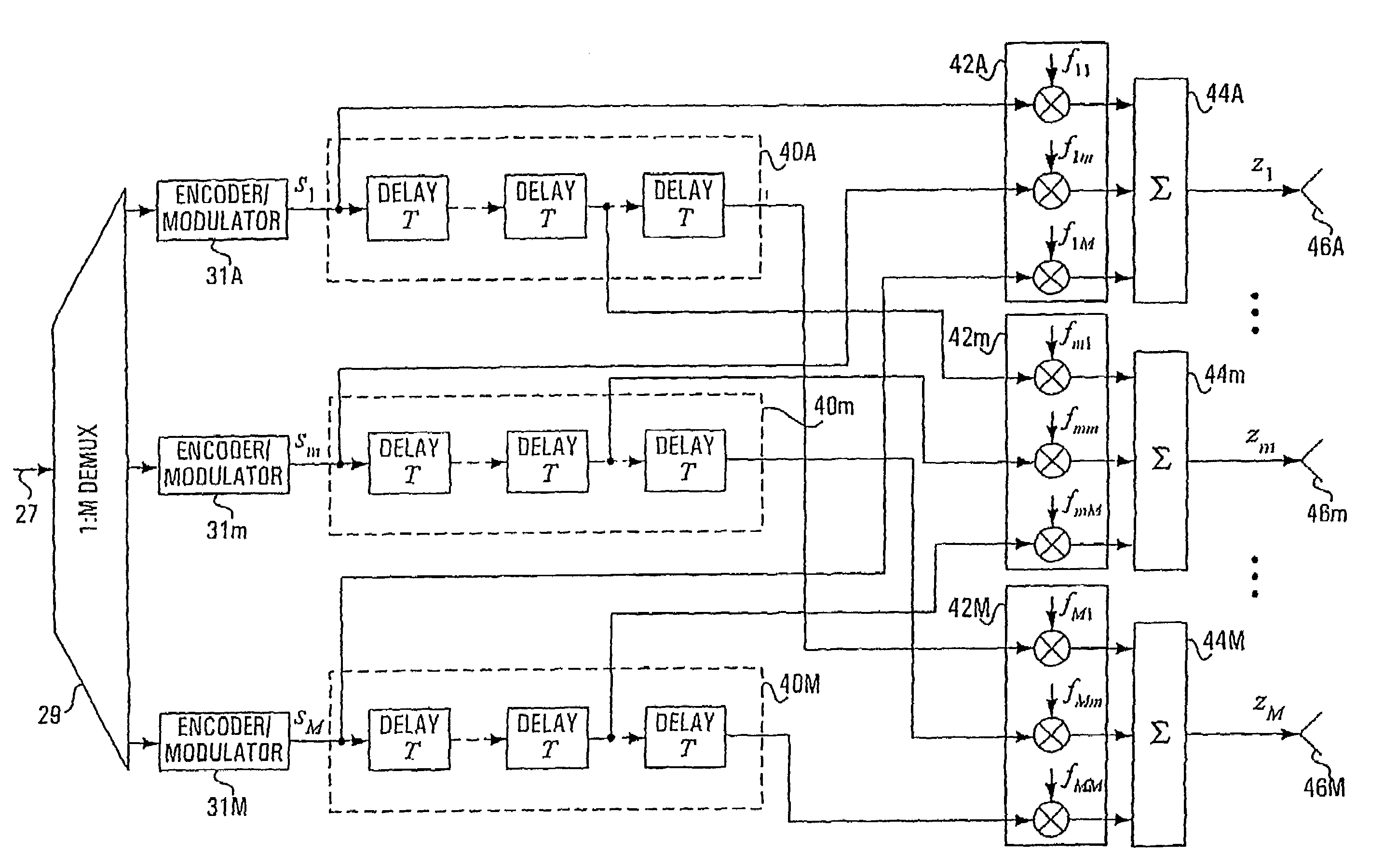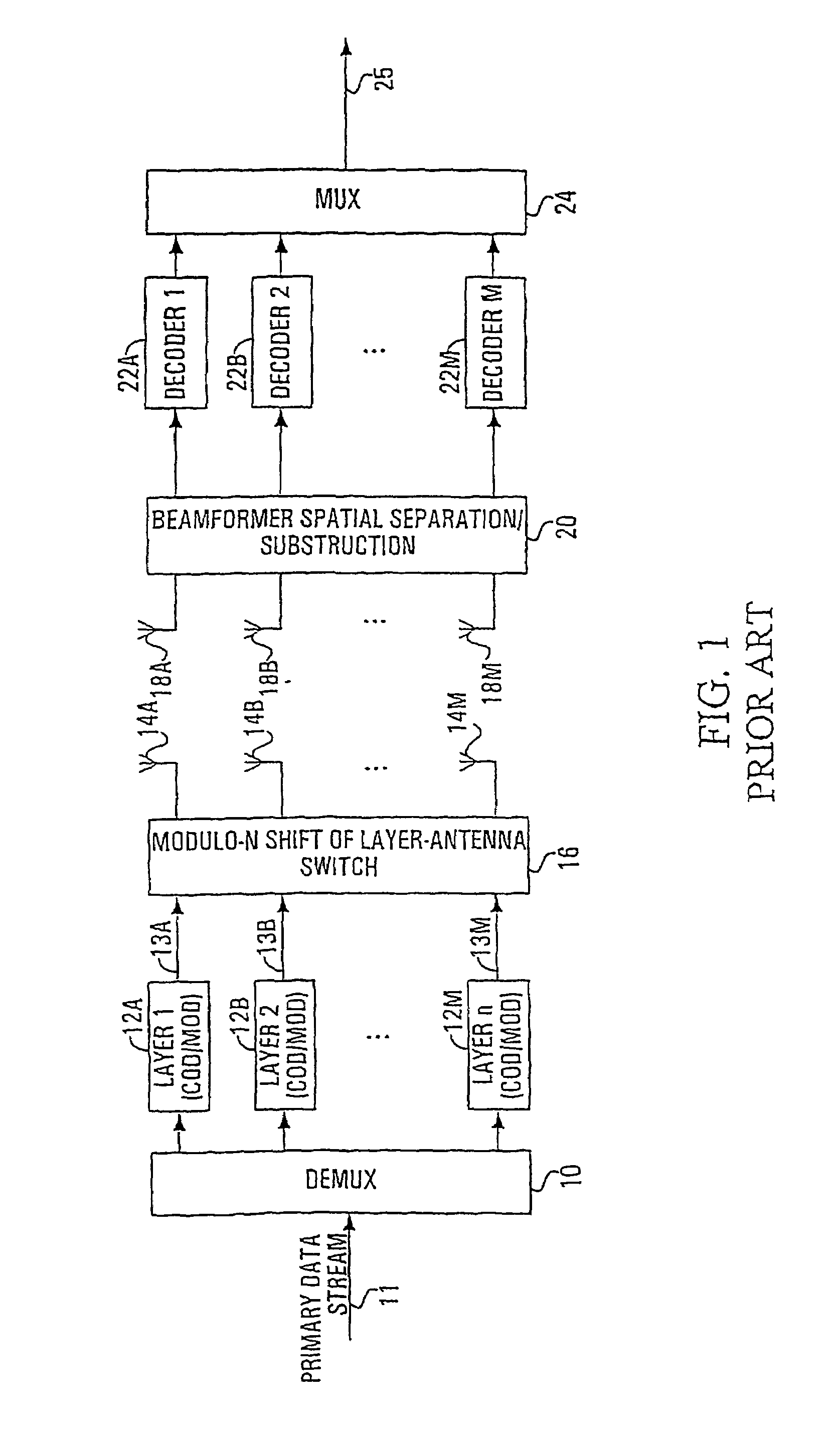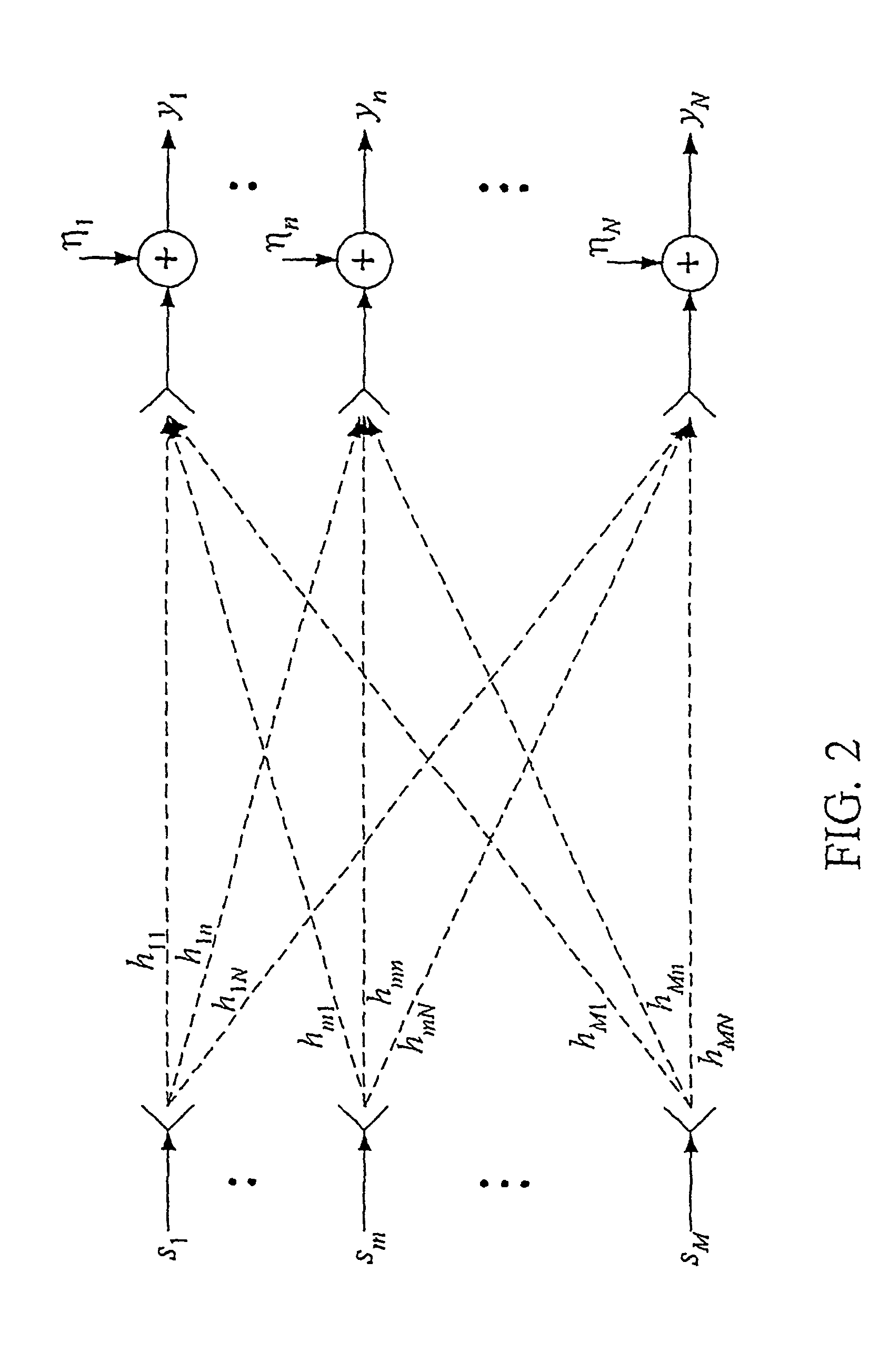Combination of space-time coding and spatial multiplexing, and the use of orthogonal transformation in space-time coding
- Summary
- Abstract
- Description
- Claims
- Application Information
AI Technical Summary
Benefits of technology
Problems solved by technology
Method used
Image
Examples
Embodiment Construction
[0024]Embodiments of the invention provide a layered space-time architecture with additional gain provided with space-time coding. To achieve this each information symbol sm is arranged to as to be represented on all M Transmit Antennas. An algorithm of space-time coding is developed for one transmitter, and aggregated with algorithms for M transmitters, so that the spectral efficiency expected for conventional BLAST architecture is retained.
[0025]A range of coding gain methods / systems and transmitters are provided which combine space time coding and spatial multiplexing. Referring firstly to FIG. 4, shown is a space-time coder / multiplexer coding gain system consisting of a 1:M demultiplexer 29 having a single primary input 27 and having M outputs which are each coded and modulated in respective encoder / modulator blocks 31A, . . . , 31M to produce encoded substreams s1, s2, . . . , sM. There is an orthogonal transformation block 30 and a number of delay blocks 32 (only two shown, 32...
PUM
 Login to View More
Login to View More Abstract
Description
Claims
Application Information
 Login to View More
Login to View More - R&D
- Intellectual Property
- Life Sciences
- Materials
- Tech Scout
- Unparalleled Data Quality
- Higher Quality Content
- 60% Fewer Hallucinations
Browse by: Latest US Patents, China's latest patents, Technical Efficacy Thesaurus, Application Domain, Technology Topic, Popular Technical Reports.
© 2025 PatSnap. All rights reserved.Legal|Privacy policy|Modern Slavery Act Transparency Statement|Sitemap|About US| Contact US: help@patsnap.com



